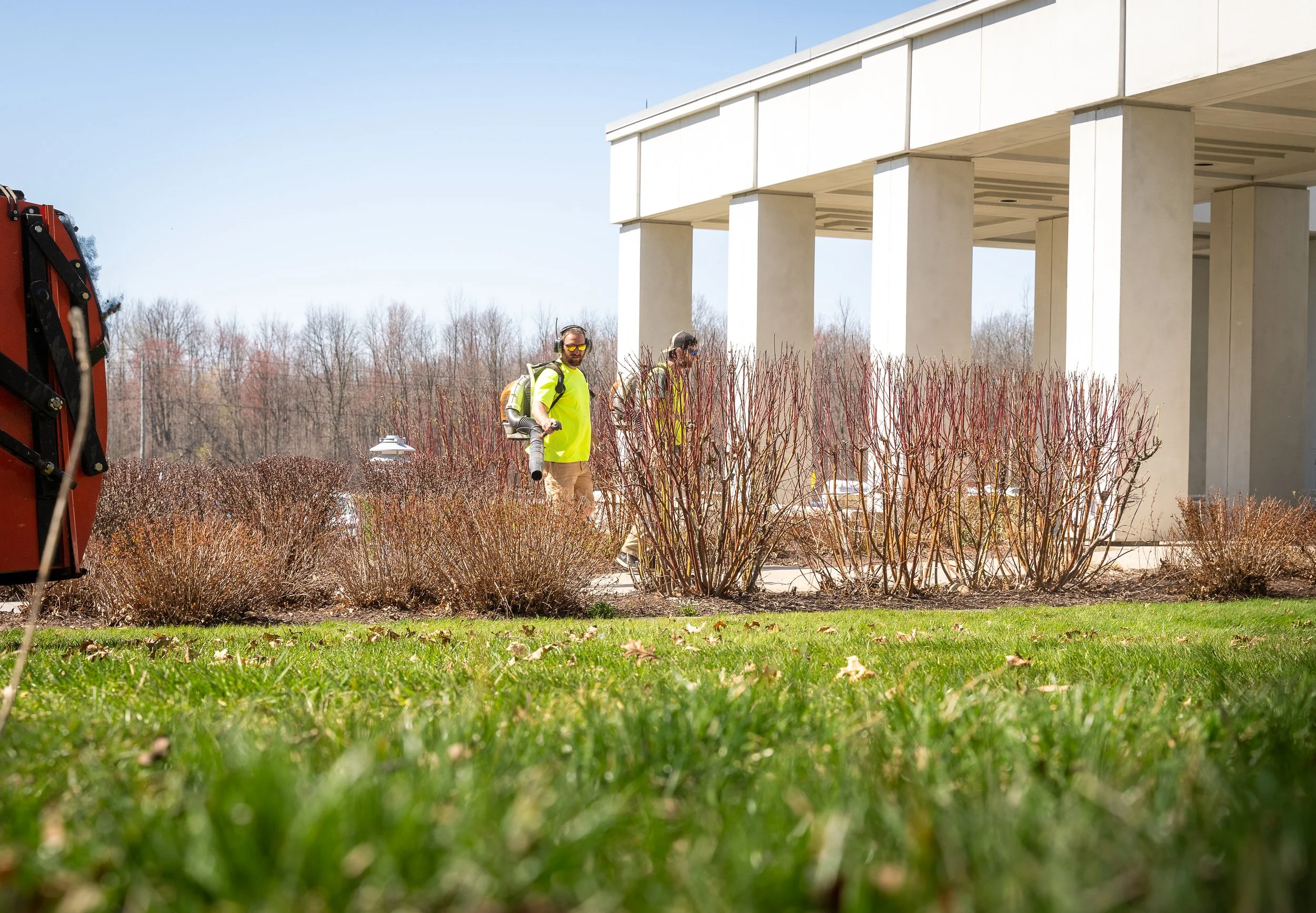10 Components of a Successful Landscape Maintenance Program
Ten Key Components of a Successful Landscape Maintenance Program
Commercial Property Maintenance Crew Cleaning Up Leaves
Property maintenance means different things to different commercial property owners and managers. That said, there are a stunning number of tasks that are viewed as having similar priority, as well as being hugely important to these PMs. Put another way, well-run property management companies expect certain things done for their landscape maintenance, because they understand what happens when the maintenance is not properly done.
Lawn care: This includes mowing, edging, fertilization, and weed control. Regular mowing and trimming will keep the grass looking neat and tidy, while fertilization will ensure that it stays healthy and green. Weed control is also important to prevent unsightly weeds from taking over the lawn. It can become overgrown, patchy, and prone to weed infestations. This can make the property look unkempt and unprofessional, which can negatively impact the business's image.
Tree and shrub care: Trees and shrubs can add beauty and shade to a property, but they also require care to stay healthy. Tasks include pruning, shaping, and fertilizing, as well as pest and disease control. When trees and shrubs are not properly pruned, they can become overgrown and unsightly, and may even pose a safety hazard. Without regular fertilization, they may also become weak and more susceptible to pests and disease.
Flower bed maintenance: Creating and maintaining flower beds can add color and interest to a property. Tasks include planting, mulching, weeding, and deadheading (removing spent flowers). Not maintained, they can become overrun with weeds, which can make the property look neglected and unappealing. Dead flowers left on plants can also detract from the overall appearance.
Irrigation: Proper watering is essential to maintaining a healthy lawn and plants. An irrigation system can help ensure that plants receive the right amount of water, and also conserve water by avoiding overwatering. Unless you water properly, lawns and plants may become wilted and brown, which can make the property look unattractive and neglected. Overwatering, on the other hand, can lead to fungal growth and root rot, which can damage plants and make them more susceptible to disease. And, of course, wasting valuable water is not only expensive but should be avoided.
Snow removal: In the winter months, snow and ice can make a property unsafe and difficult to navigate. A snow removal program can include plowing, shoveling, salting, and sanding to keep the property safe and accessible. Rochester area properties need snow removal programs in place because snow and ice can accumulate on walkways and parking lots, making them slippery and hazardous. This can make it difficult or even impossible for tenants, customers, or employees to safely navigate the property. And, of course, we do live in litigious times.
Hardscaping: Hardscaping refers to the non-plant elements of a landscape, such as pathways, patios, and retaining walls. Maintaining these elements can include cleaning, sealing, and repairing any damage. Crumbling hardscaping elements like pathways and retaining walls, when not properly maintained, become cracked, uneven, and even dangerous. This can not only make the property look unattractive but can also pose a liability risk.
Seasonal plantings: Planting annuals and bulbs can add seasonal interest to a property. Tasks include planting, fertilizing, and watering. Plants require care, otherwise, seasonal flowers may not thrive, leaving the property looking bare and uninviting. Over- or under-fertilizing can also harm the plants, leading to poor growth or even dying plants.
Pest and disease control: Insects and diseases can damage plants and trees, and also pose a risk to human health. Control measures include identifying and treating infestations, as well as preventative measures such as pruning and fertilizing. Nobody wants pests or diseases on their property. Without these control measures in place, insects and diseases can spread quickly, damaging or even killing plants and trees. This can result in a neglected and unsightly property, as well as potential safety hazards if trees become unstable and fall.
Trash and litter removal: Keeping a property clean and free of litter is important for appearance and safety. This can include regular trash pickup, as well as cleaning up after storms or other events. Don’t do this regularly and the property will quickly become cluttered with litter and other trash, which can make it look unattractive and even unsanitary. This can negatively impact the business's image and make it less appealing to customers or tenants.
General landscape cleanup: This includes tasks such as raking leaves, clearing debris, and removing dead plants. Regular landscape cleanup includes timely removal of debris and dead plants which may accumulate, making the property look unkempt and neglected. This can detract from the overall appearance and create a negative impression.
These ten categories are typical of PropertyCare projects in the Greater Rochester area. Not every property is the same, but the reader should come away with a good sense of best practices in the industry. We have left pricing out of this guide, but we can share with you, over the phone, some cost information that you might find helpful as you are establishing your budget. Email us: office@careforyourproperty.com. Call or text us at (585) 750-1616.
Photos—which illustrate some of our work—are available here.

